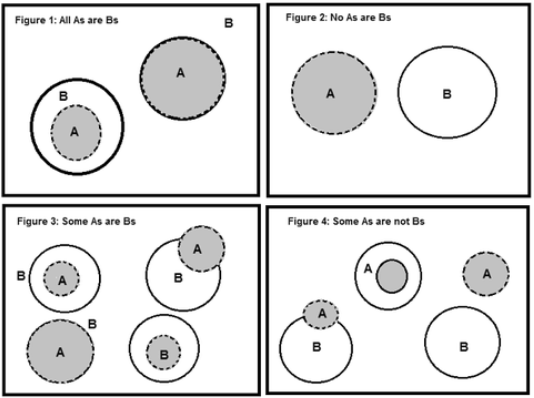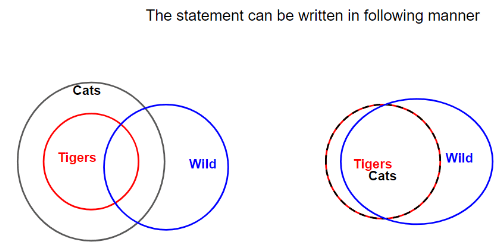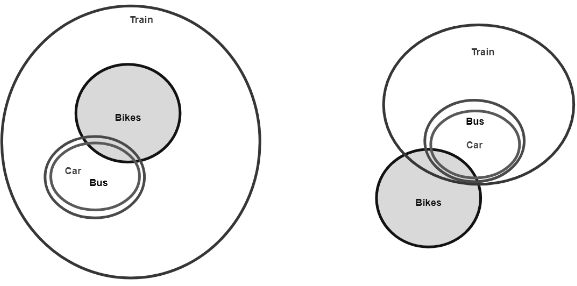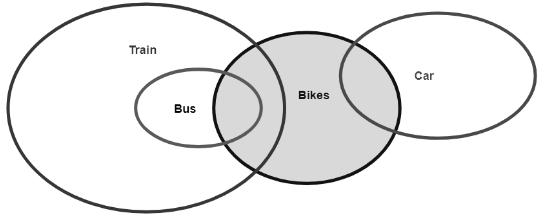Syllogism questions are a part of the reasoning. This question contains a few statements followed by two conclusions. A few of the options are later given, out of which the correct option is needed to be chosen.
Syllogism Tricks
The syllogism questions are either attempted with logic or with Venn diagrams. Mostly a Venn diagram approach is more successive for such questions. The reason is it gives a more clear perspective about the answer and is mostly true.
All the cases that can be made into a syllogism question are listed below.

There are 4 cases,
All A’s are B’s.
No A’s are B’s.
Some A’s are B’s.
Some A’s are not B’s.
As per the given statements, any one of the 4 cases will fit in, for which we will draw Venn diagrams. And similarly, for other sentences, we will again draw Venn diagrams and try to combine those diagrams. These will result in multiple Venn diagrams.
If the conclusion is true as per all the Venn diagrams then the conclusion is true, and if the conclusion is false in any one of the Venn diagrams then the conclusion is false.
Thus, we can summarise these as if the statement is true in all diagrams, it is true. If it is not true for even a single statement, it is false.
Multiple choices of Syllogism
A statement and conclusion question generally has two conclusions, and out of these two conclusions. A few of the available options can be:
Only Conclusion I is true/ false.
Only Conclusion II is true/ false.
Only Conclusion I follow.
Only Conclusion II follows.
Conclusion I follow, but II does not.
Conclusion II follows, but I do not.
Any one of the conclusions can be true.
Either conclusion I or conclusion II follows.
Both the conclusions are true/ false.
None of the conclusions follows.
None follows.
These are the few options that may be available as your solution.
Example of Syllogism
The syllogism question can be solved with either a logical approach or either with the help of a Venn diagram.
Logical Approach to solve Syllogism
The logical approach is the basic approach to solving questions related to syllogism. Let’s try a question with this approach to understand it better.
Statements: All tigers are Cats.
Some cats are wild.
Conclusion I: All cats are wild.
Conclusion II: Tigers are wild.
As per the statements, all tigers are cats. Therefore, every single tiger is a cat. In the second statement, it is stated that some cats are Wild. Therefore, some cats may be wild, but if it includes tigers or not is not mentioned.
Thus, we can see that none of the sentences is true.
Venn Diagram to solve Syllogism
syllogism questions with answers for bank exam
Statements: All tigers are Cats.
Some cats are wild.
Conclusion I: All cats are wild.
Conclusion II: Tigers are wild.
The question can be solved with the help of a Venn diagram, but in a Venn diagram approach, multiple diagrams are needed to be drawn to check whether a particular conclusion can be applied or not. A few of the diagrams that can help to answer this question are shown below, although we need multiple diagrams to answer the question.

The main idea of the Venn diagram approach is that to state that a conclusion is true, you need to make all the diagrams and verify whether the Conclusion is correct or not. But to prove a conclusion is false, you just need a single diagram which does not follow the statement.
Hence, out of multiple Venn diagrams, only the mentioned above two are enough to conclude that “Conclusion I: All cats are wild” And “Conclusion II: All Tigers are wild” are false.
Syllogism questions with answers for bank exam
A few of the questions of a syllogism from the previous year’s banking exam are given below with the solution.
Question1
All buses are trains.
Only a few bikes are trains.
Some bikes are not cars.
Conclusions: I. All buses being cars is a possibility.
II. No bus is a bike.
(a) If only the conclusion I follow.
(b) If only conclusion II follows.
(c) If either conclusion I or II follows.
(d) If neither conclusion I nor II follows.
(e) If both conclusions I and II follow.
If we draw the Venn diagram of the given statement and then merge the diagrams, we will get multiple diagrams out of which the final diagrams given below can be used to conclude which of the conclusions are true.
In Conclusion, I say that All buses being cars is a possibility. As we need to find the chances of All the buses being cars, if there is even a single case, the Conclusion will be true. Hence, the Conclusion is correct. There are possibilities that all buses can be cars, as shown in the below case.

For Conclusion II, No bus is a bike, as we can see that in the above case, Some buses are bikes. Therefore, this conclusion will be false.

Hence, the correct answer is option A, If only the conclusion I follow.
Conclusion
Syllogism questions are a part of the reasoning. This type of question can be solved using the Venn Diagram. There are 12 types of Venn diagrams divided into four different categories.
 Profile
Profile Settings
Settings Refer your friends
Refer your friends Sign out
Sign out






